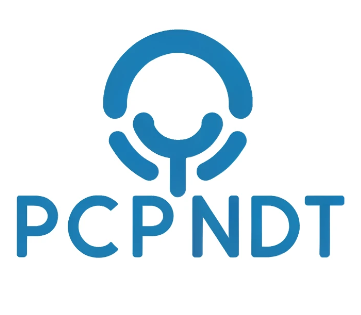PPP Loan vs Student Loan: PPP loans aided businesses during COVID-19, offering forgiveness if used for payroll etc. Student loans finance education, requiring repayment over time.
There are various types available to individuals and businesses, each serving different purposes and with unique terms and conditions. Two common types of loans that have gained significant attention in recent times are the Paycheck Protection Program (PPP) loan and student loan. While both serve as financial tools to support individuals and businesses, they cater to distinct needs and come with specific features that set them apart.

What is PPP Loan?
The Paycheck Protection Program (PPP) loan was introduced by the U.S. government in response to the economic impact of the COVID-19 pandemic. It was designed to provide financial assistance to small businesses to help them retain employees, cover payroll costs, and other eligible expenses. PPP loans are forgivable if certain conditions are met, making them an attractive option for businesses looking to navigate through challenging times.
Features
- Purpose: The Paycheck Protection Program (PPP) was designed to help businesses retain employees during the pandemic. It aimed to keep society and the employment market intact by providing forgivable loans to businesses of all sizes.
- Forgiveness and Structure: PPP loans were structured to be forgivable from the outset. No contract was broken, and no parameters were changed after the fact. The government provided cash transfers to businesses, which were later forgiven.
- Amounts Forgiven: The PPP program has forgiven nearly $757 billion in loans to private businesses, with an average amount forgiven of $70,000 per recipient.
- Total Cost: The government gave out nearly $790 billion in PPP loans, with $757 billion forgiven. The major beneficiaries were business owners and shareholders.
Pros
- Forgivable if used for eligible expenses.
- Designed to support small businesses during economic crises.
- Low-interest rates.
- No collateral or personal guarantees required.
Cons
- Strict eligibility criteria.
- Limited in terms of usage.
- Complex forgiveness process.
What is a Student Loan?
Student loans are financial aids provided to students to cover the cost of higher education, including tuition, books, and living expenses. These loans are offered by the government or private lenders and must be repaid with interest after the student completes their education. Student loans play a crucial role in enabling individuals to pursue their academic goals and invest in their future careers.
Features
- Purpose: Student loans are taken out by individuals to finance education expenses. They are not intended for businesses but rather for personal investment in education.
- Forgiveness and Structure: Student loans are voluntary and come with no expectation of a bailout. Borrowers take them out individually, and forgiveness is not guaranteed.
- Amounts Forgiven: The Biden administration’s student loan forgiveness plan aimed to provide $10,000 to $20,000 in relief per borrower.
- Total Cost: The Department of Education relied on the 2003 HEROES Act to justify wiping out roughly $430 billion in debt. The Biden student-debt relief plan would have cost as much as $519 billion over 10 years.
Pros
- Enables access to higher education.
- Flexible repayment options.
- Can help build credit history.
- May offer deferment or forbearance options.
Cons
- Accumulation of interest over time.
- Repayment obligations start after graduation.
- Limited options for forgiveness or discharge.
PPP Loan vs Student Loan
| Aspect | PPP Loan | Student Loan |
|---|---|---|
| Purpose | Cover payroll and essential business expenses | Finance educational expenses |
| Eligibility | Small businesses, non-profits, self-employed | Students enrolled in eligible institutions |
| Forgiveness Options | Yes, based on usage and retention criteria | Limited, primarily for federal loans under specific conditions |
| Interest Rates | Low (1%) | Fixed for federal loans; variable or fixed for private loans |
| Repayment Terms | 2 to 5 years for unforgiven amounts | Varies; flexible options for federal loans |
| Application Process | Through participating lenders | Through FAFSA for federal loans; private lenders for others |
| Use of Funds | Payroll, rent, utilities, mortgage interest | Tuition, fees, books, living expenses |
| Impact | Supports business continuity during crises | Enables access to higher education |
When you should consider PPP Loan?
- If you are a small business facing financial challenges, especially during economic crises like the COVID-19 pandemic.
- If you need funds to cover payroll costs, rent, utilities, or other eligible expenses to retain employees and sustain business operations.
- When you meet the eligibility criteria set by the government for PPP loan assistance.
- If you are looking for a loan with the potential for forgiveness under specific conditions.
When you should consider Student Loan?
- If you are pursuing higher education and need financial assistance to cover tuition, books, and living expenses.
- If you are looking to invest in your academic and career development.
- When you require flexible repayment options tailored to your post-graduation financial situation.
- If you are seeking to build credit history and enhance your future prospects through education.
Conclusion
PPP loans and student loans serve distinct purposes and cater to different financial needs. While PPP loans are geared towards supporting businesses during economic crises and offer forgiveness under specific conditions, student loans are aimed at helping individuals pursue higher education and invest in their future careers. Understanding the differences between these two types of loans is essential for individuals and businesses to make informed decisions based on their specific circumstances and financial goals. Whether seeking financial assistance for business operations or educational pursuits, evaluating the features and implications of PPP loans and student loans is crucial in navigating the borrowing landscape effectively.
